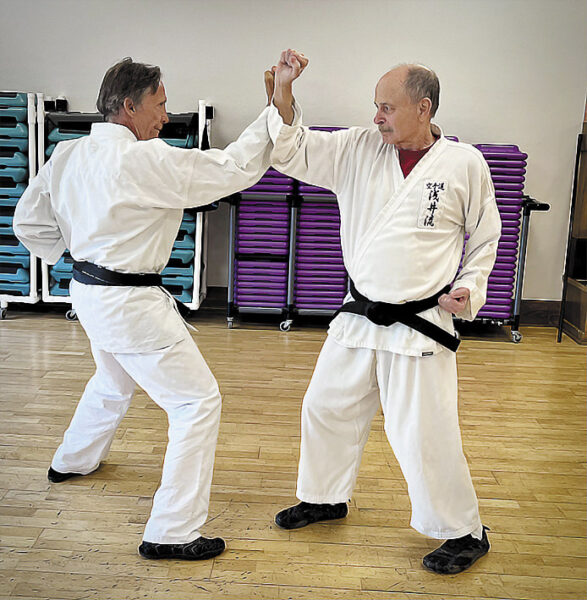 Shari Rodgers
Shari Rodgers
How did Shotokan’s symbol become the tiger? Read on!
The tiger symbol of Shotokan Karate is one that’s immediately recognized by karate practitioners around the world, yet two questions often asked are what does this symbol represent and where did it come from?
We know that tigers themselves don’t exist naturally in Japan. So, it is somewhat unusual for a Japanese martial art to be represented by such an animal. However, sometimes it isn’t wise to take things too literally. When Funakoshi Gichin Sensei came to Japan in the early 1920s, he had a great friend, Kosugi Hoan, who encouraged Funakoshi Sensei to remain in Japan to teach and promote his style of karate.
Kosugi was a very famous artist and painter. He also was influential in the development of karate in Japan, as he was a karate student of Funakoshi Sensei as well. He encouraged his teacher to write a book about his style of karate. In Japan, a book is known as “Tora no Maki” or “Tiger Scroll” (or roll), and this term dates back to a time when master works were written on a long scroll.
Funakoshi Sensei did just that and published his first book in 1922. It was the first-ever karate book published in the world. The illustrations of performances inside the book were drawn by Kosugi’s student Yamashiro Masatsuna, and the cover itself was designed and drawn by Kosugi himself. The cover showed what is now the famous Shotokan Tiger. Kosugi’s inspiration for the tiger came from the words “Tora no Maki,” and he used this play on words as a representation of Funakoshi Gichin’s work. This symbolism dates back to when Funakoshi would spend times of contemplation on Okinawa’s Mount Tarao, aka Tiger Tail Mountain. This was a place he would often speak of and was fond of.
The symbol of the tiger is very appropriate. It represents the strength, power, and tenacity developed by training in Funakoshi Sensei’s karate style (Shotokan), focusing on the traditional Chinese attitude that the tiger never sleeps but maintains a constantly keen alertness. The tiger being drawn inside the circle shows that its power, like the power of Shotokan karate, is contained and should never be used indiscriminately, but only when absolutely necessary.
This design, from that time on, came to represent Shotokan karate. Some might also find it interesting that the freehand nature of the circle in the original drawing has an unevenness about it that implies it was done in one circular motion, sealing the tiger inside. The artist’s signature can be seen inside this circle in the upper right by the tiger’s tail.
Want to learn more about karate and ASAI/Shotokan style? Next month will cover ASAI! Visit with us, watch, or try it out. Classes are Mondays and Tuesdays from 4 to 6 p.m. and Fridays from 2 to 4 p.m. We would love to show you the path to doing karate. You must take the first step!
